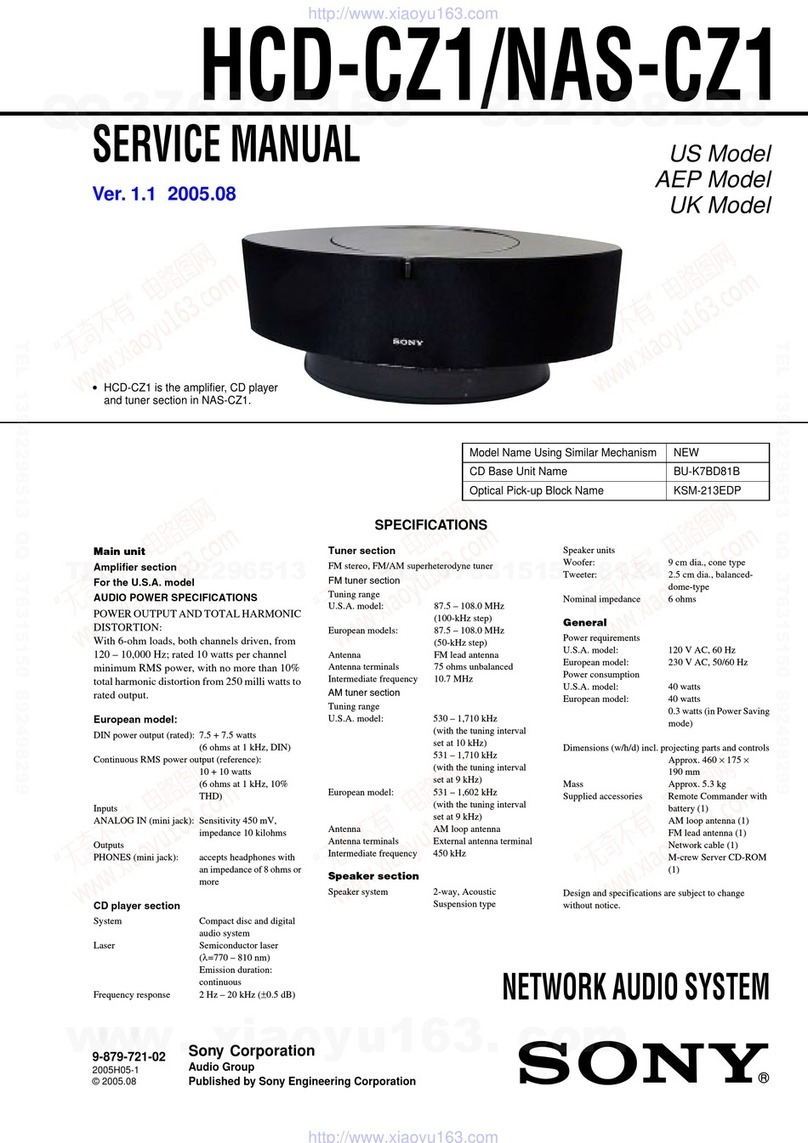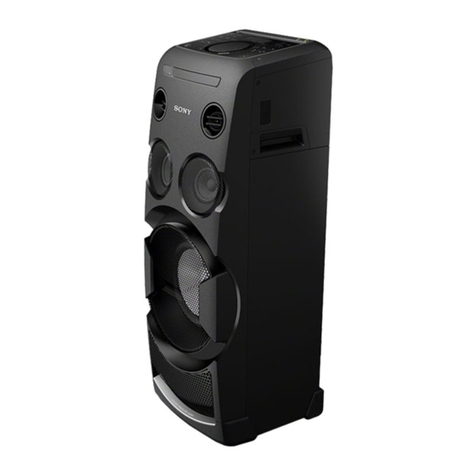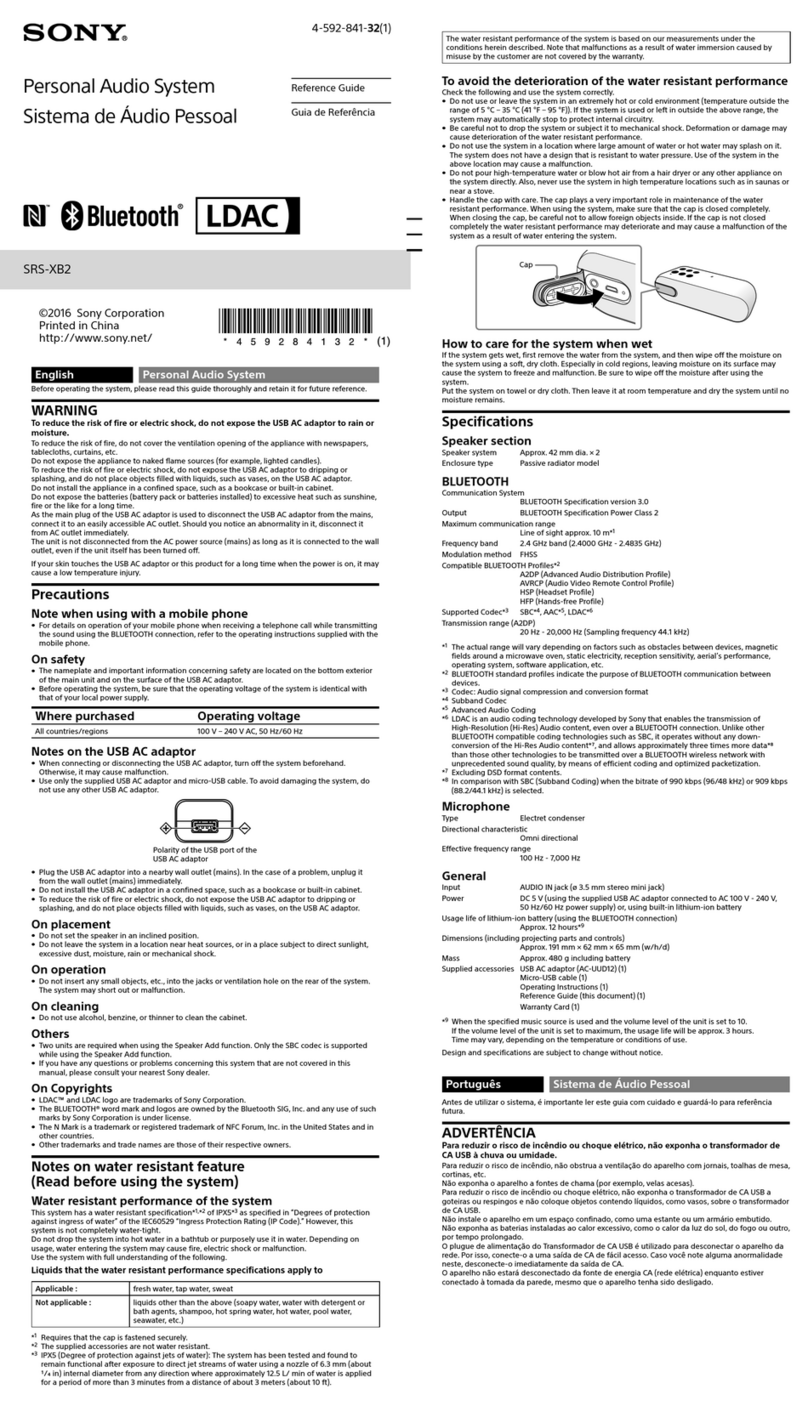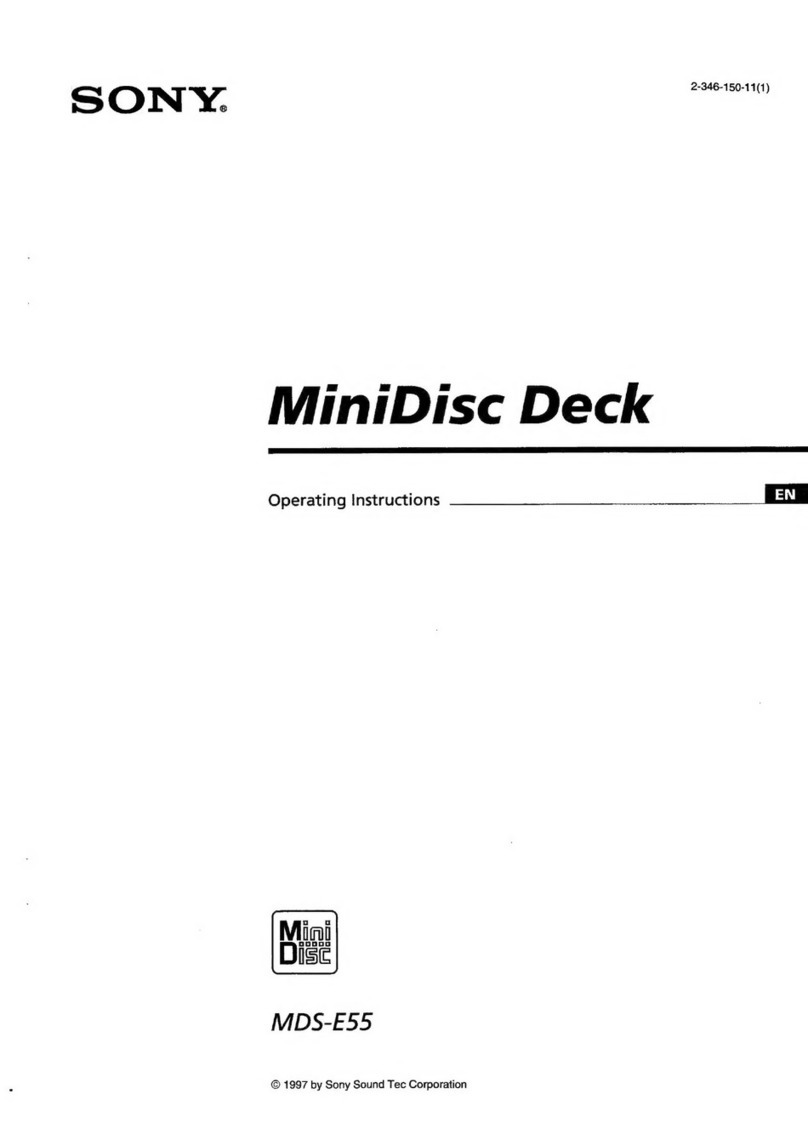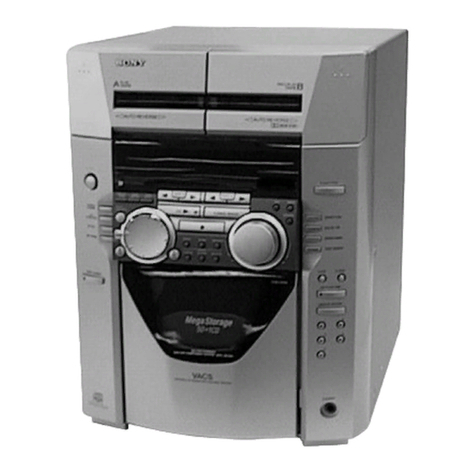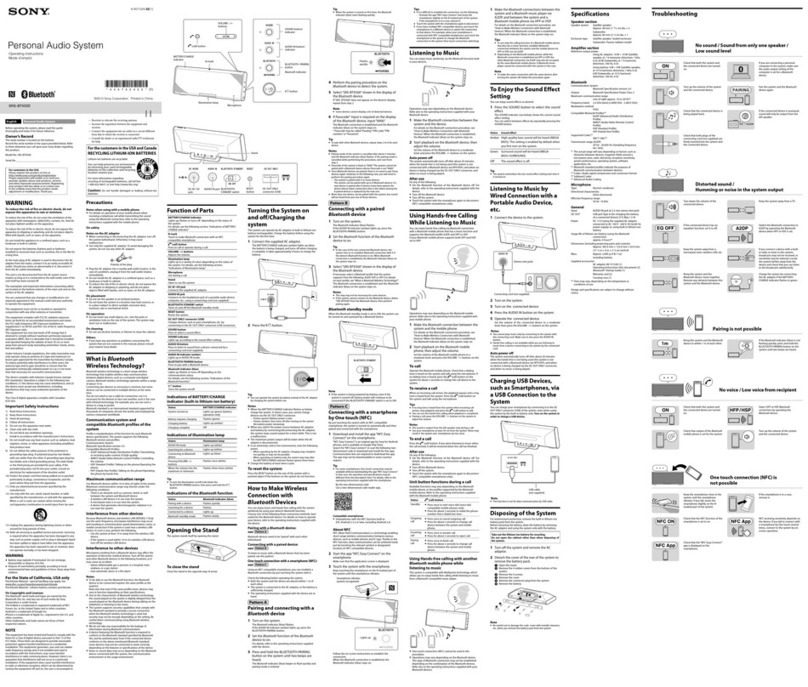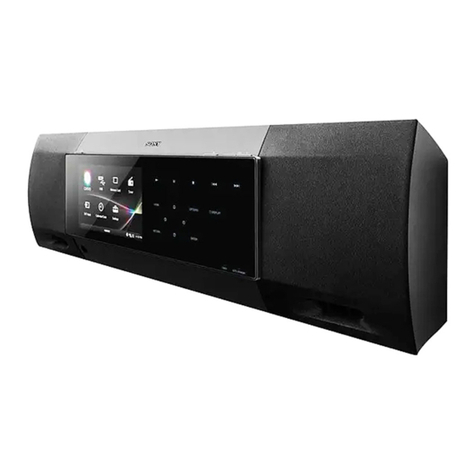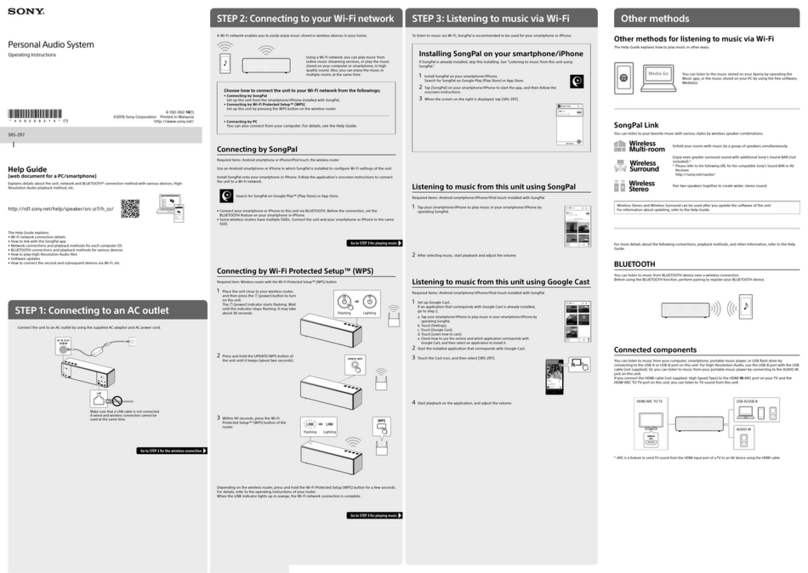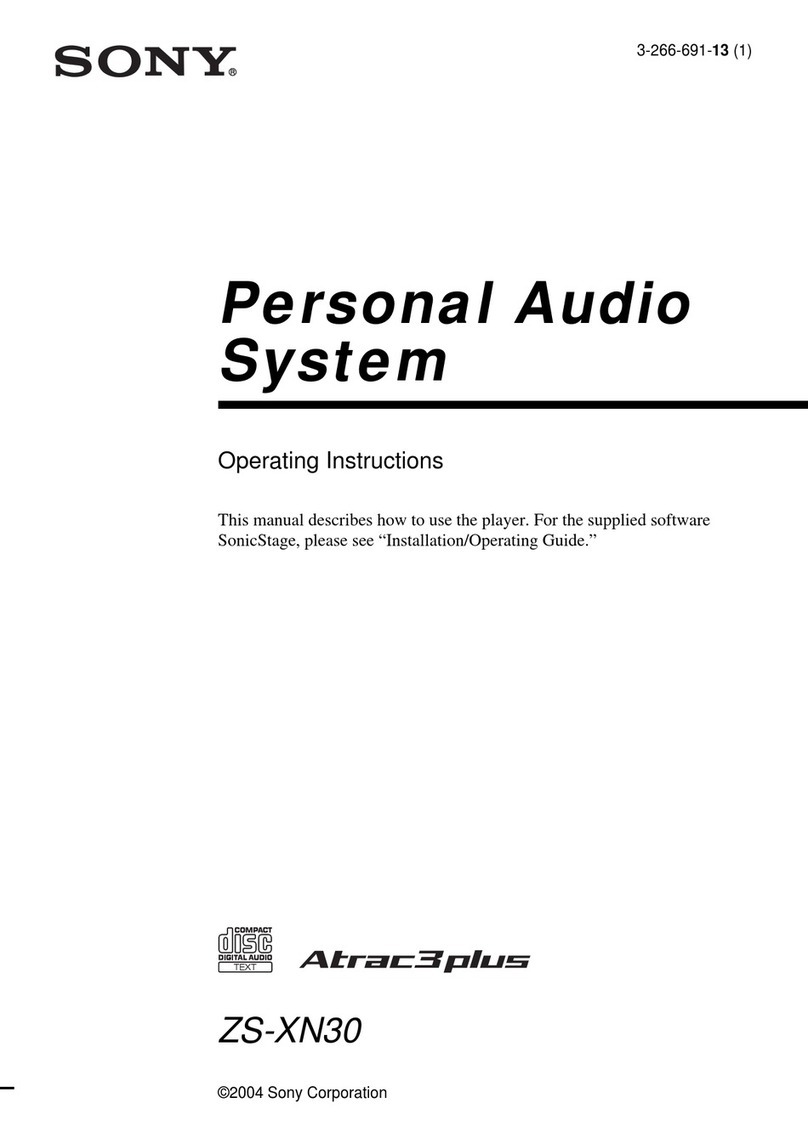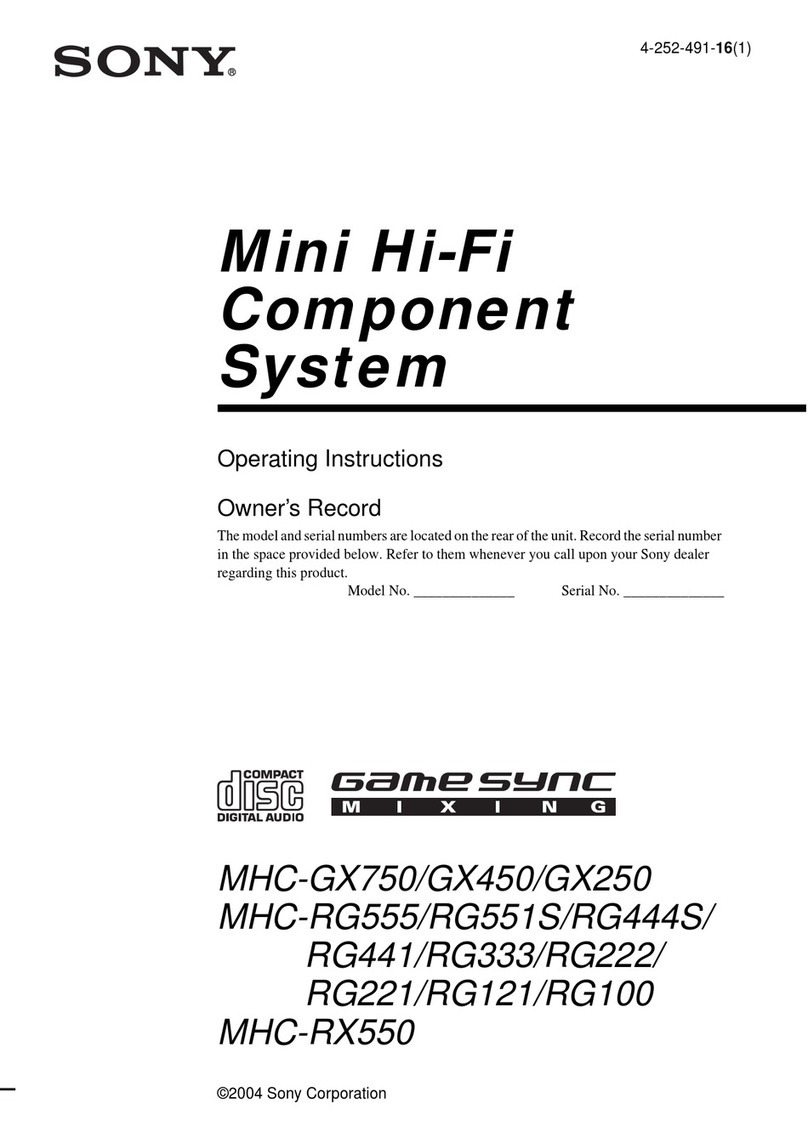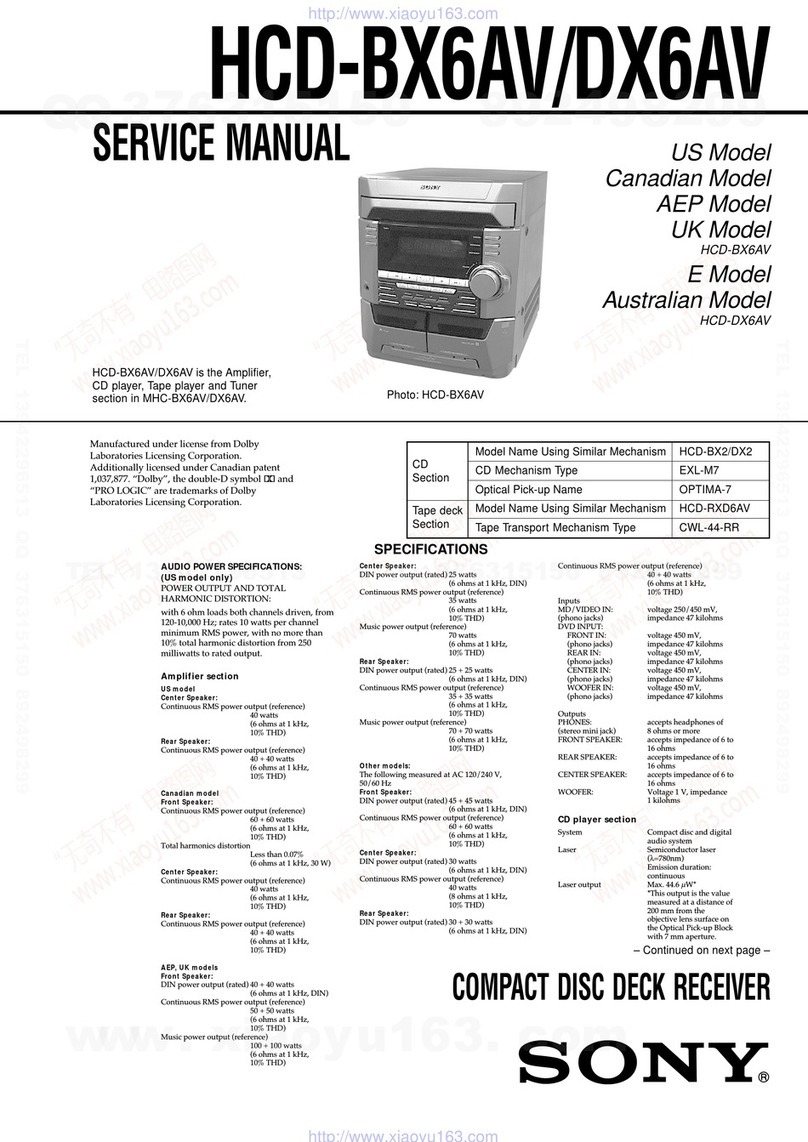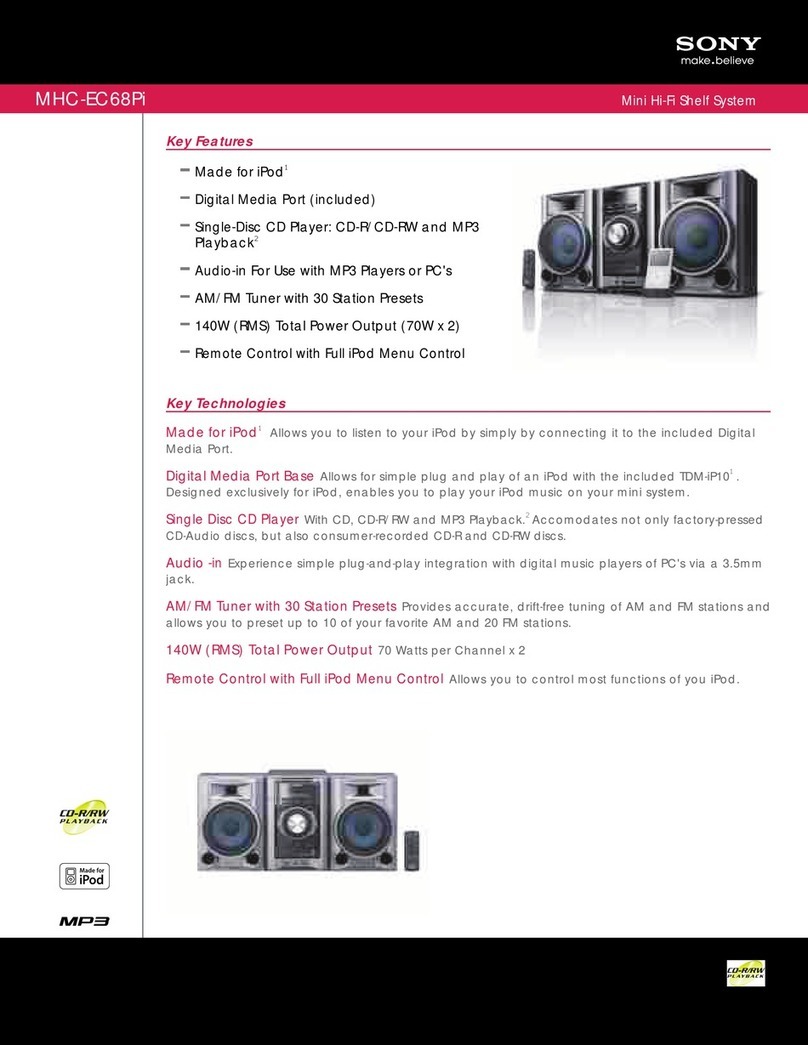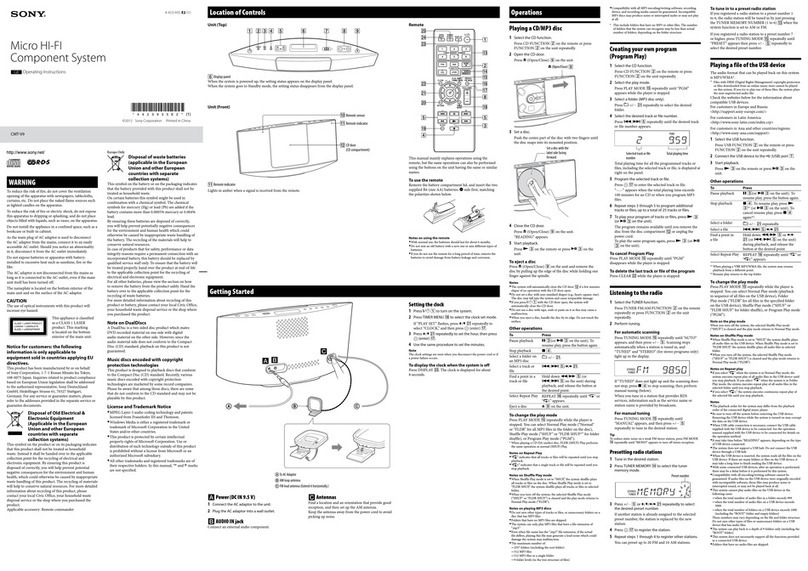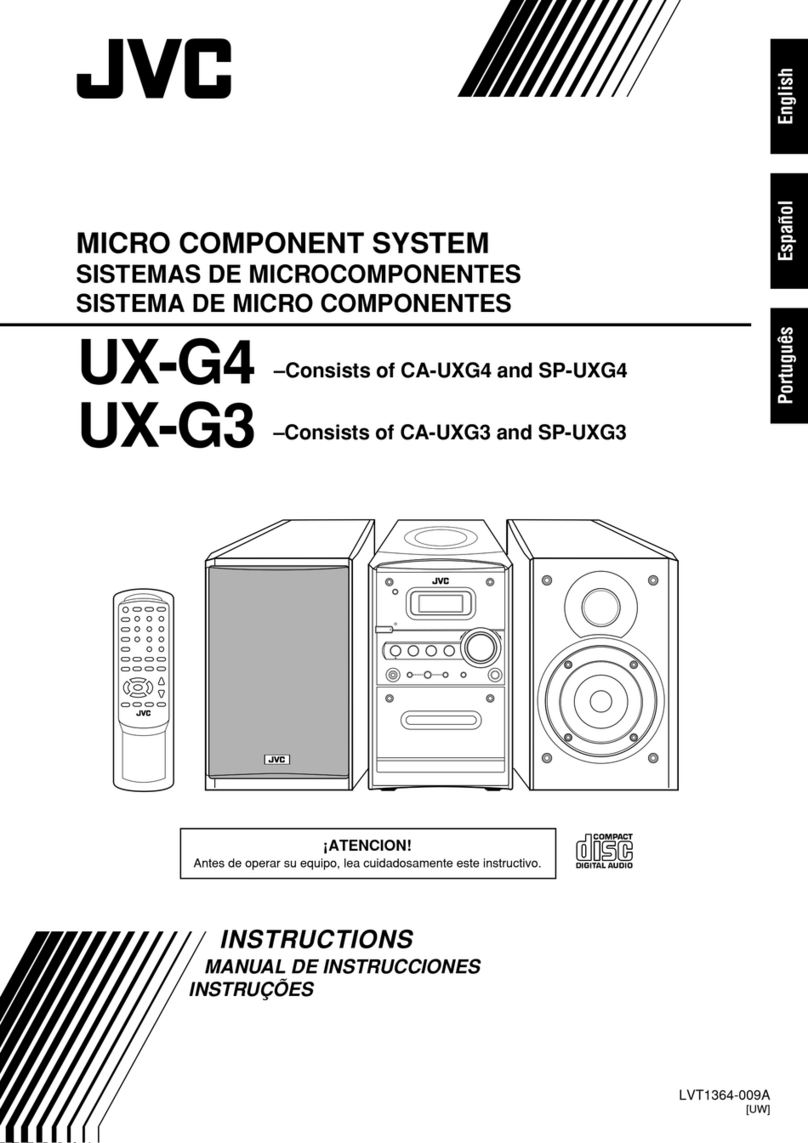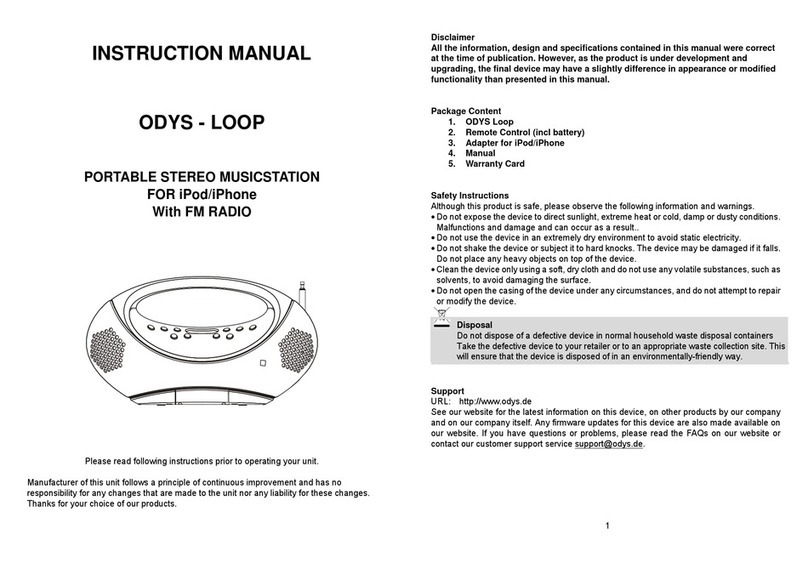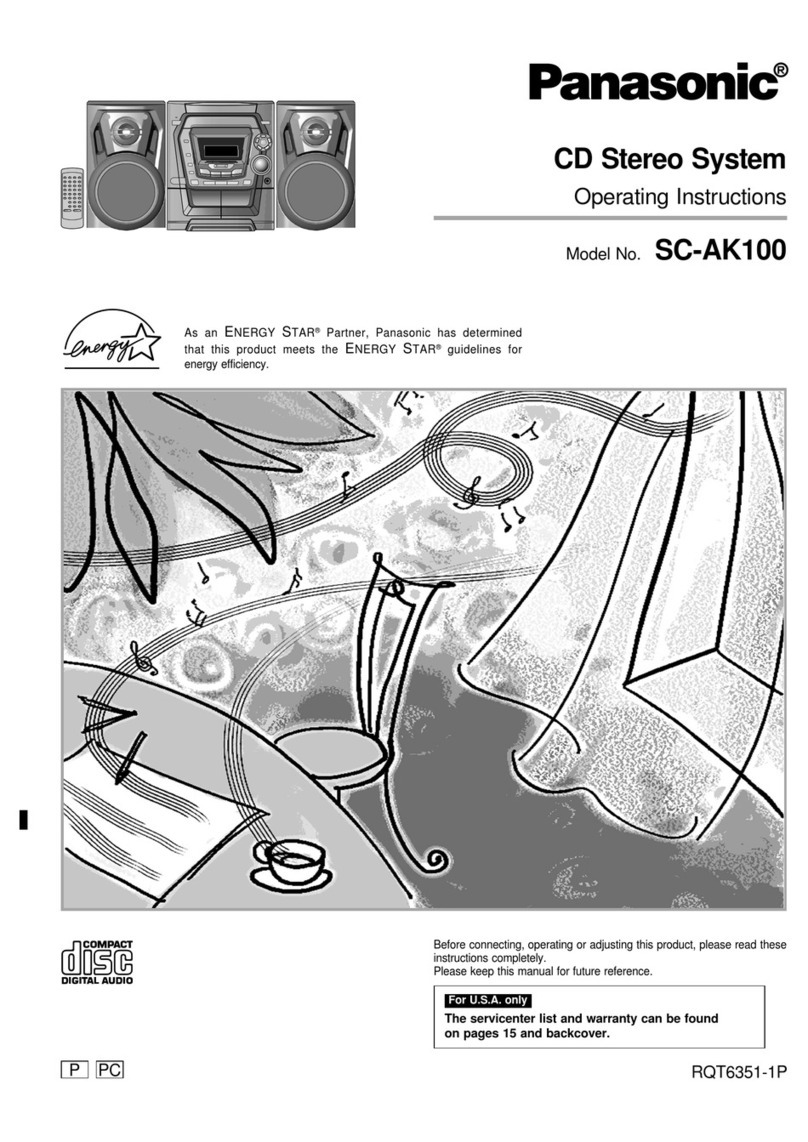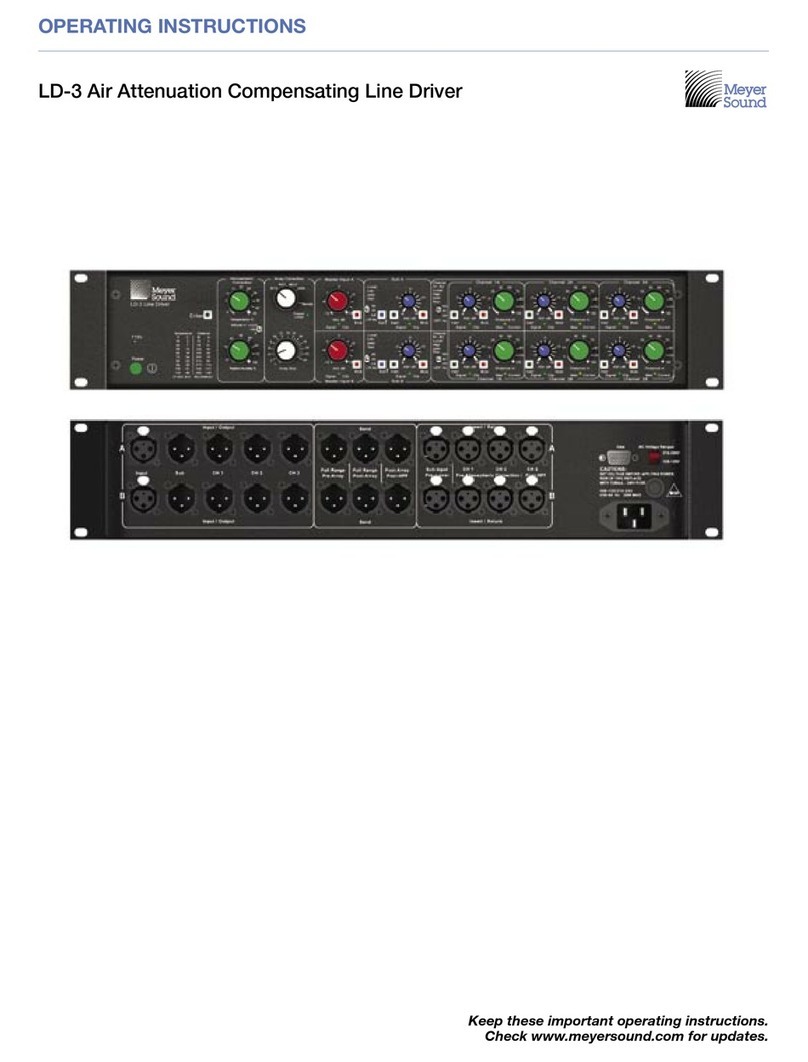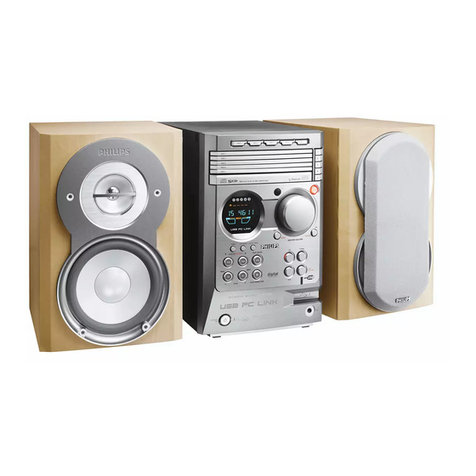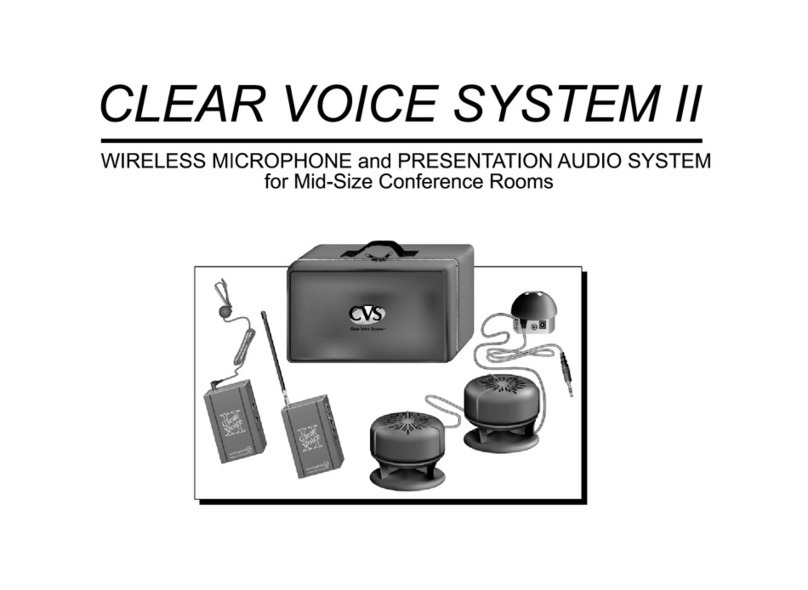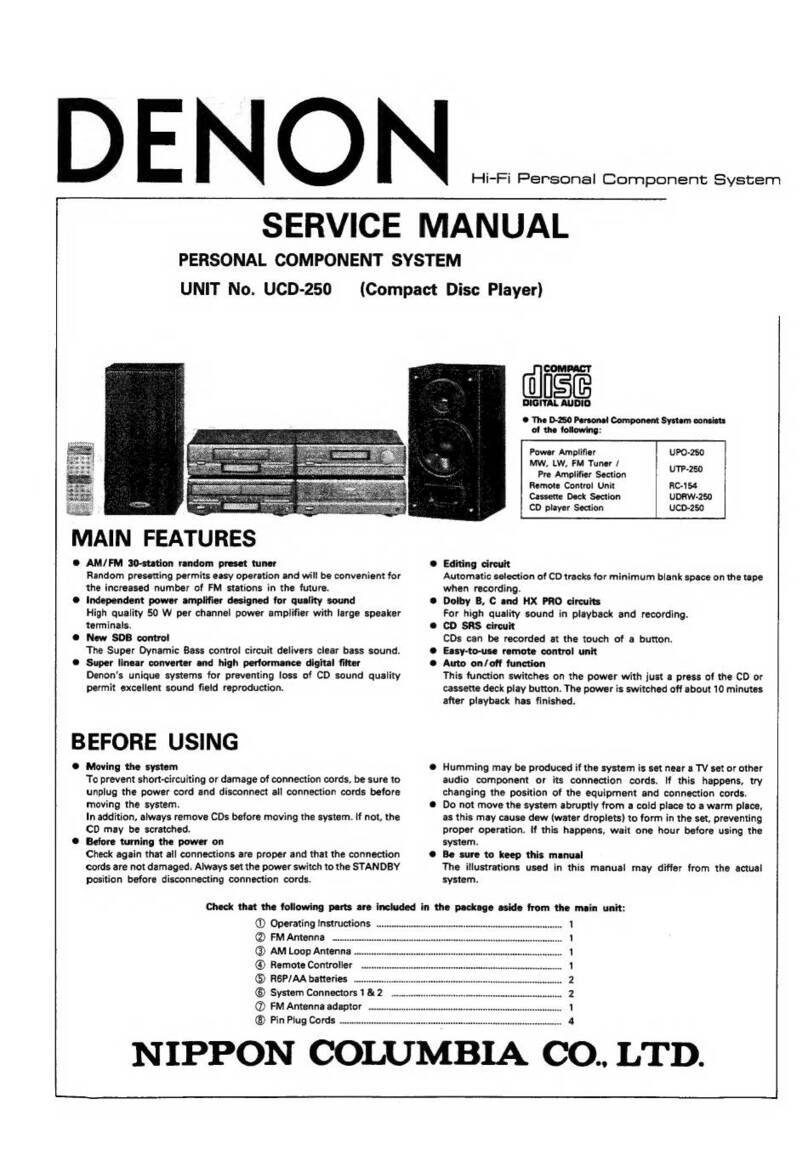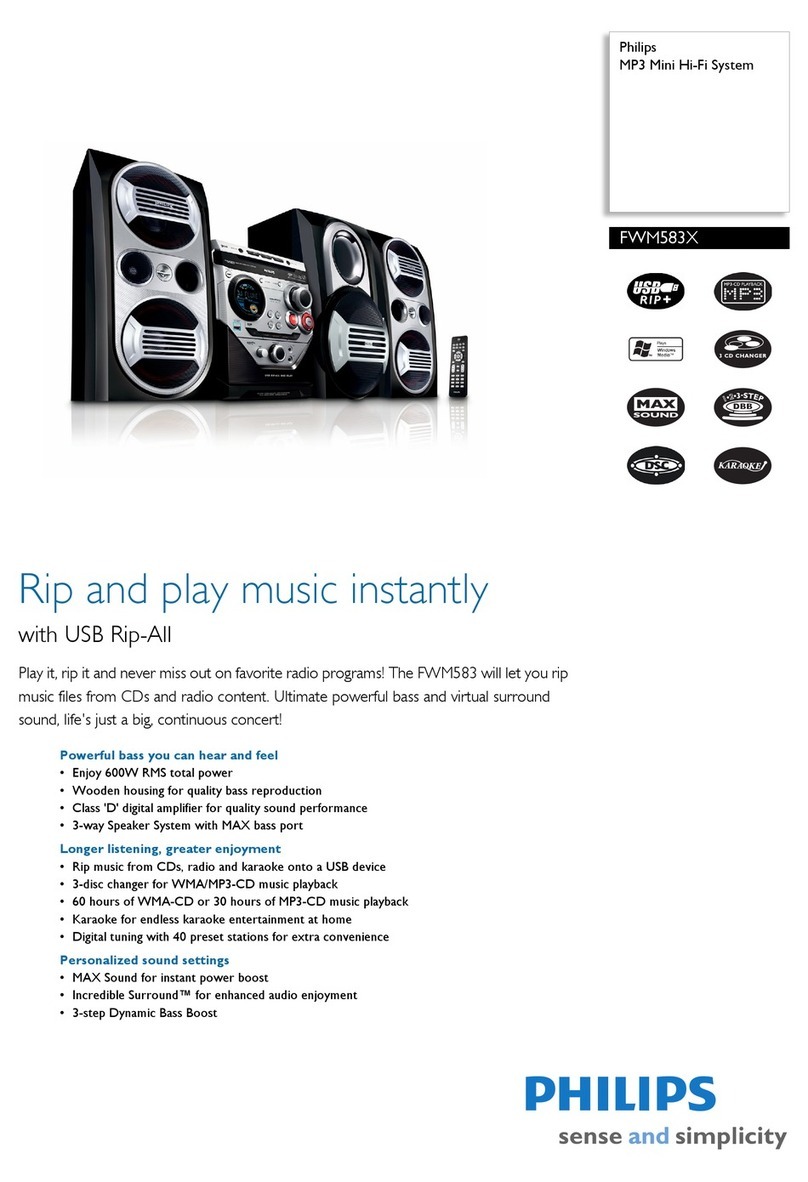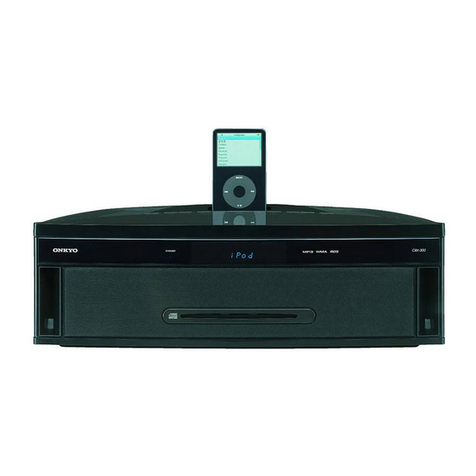– 2 –
TABLE OF CONTENTS
1. SERVICING NOTES ............................................... 3
2. GENERAL ................................................................... 4
3. DISASSEMBLY ......................................................... 7
4. TEST MODE.............................................................. 15
5. MECHANICAL ADJUSTMENTS ........................ 17
6. ELECTRICAL ADJUSTMENTS
TAPE DECK Section ...................................................... 17
CD Section ...................................................................... 20
7. DIAGRAMS
7-1. IC Pin Function Description ........................................... 22
7-2. Block Diagram – CD Section – ..................................... 27
7-3. Block Diagram – Tape Deck Section – ......................... 29
7-4. Block Diagram – Main Section (1/2) – ......................... 31
7-5. Block Diagram – Main Section (2/2) – ......................... 33
7-6. Block Diagram – Display/Key Control/
Power Supply Section – .................................................. 35
7-7. Circuit Boards ................................................................. 37
7-8. Printed Wiring Board – CD Section (1/2) – .................. 39
7-9. Schematic Diagram – CD Section (1/2) – ...................... 41
7-10. Printed Wiring Boards – CD Section (2/2) – ................ 43
7-11. Schematic Diagram – CD Section (2/2) – ...................... 45
7-12. Printed Wiring Boards – Tape Deck Section – .............. 47
7-13. Schematic Diagram – Tape Deck Section – ................... 49
7-14. Printed Wiring Board – Main Section – ........................ 51
7-15. Schematic Diagram – Main Section (1/3) – ................... 53
7-16. Schematic Diagram – Main Section (2/3) – ................... 55
7-17. Schematic Diagram – Main Section (3/3) – ................... 57
7-18. Printed Wiring Board – Power Amp Section – ............. 59
7-19. Schematic Diagram – Power Amp Section – ................. 61
7-20. Printed Wiring Board – Panel Section (1/3) –............... 63
7-21. Schematic Diagram – Panel Section (1/3) –................... 65
7-22. Printed Wiring Boards – Panel Section (2/3) – ............. 67
7-23. Schematic Diagram – Panel Section (2/3) –................... 69
7-24. Printed Wiring Boards – Panel Section (3/3) – ............. 71
7-25. Schematic Diagram – Panel Section (3/3) –................... 73
7-26. Printed Wiring Board – Power Supply Section – ........... 75
7-27. Schematic Diagram – Power Supply Section –.............. 76
7-28. Schematic Diagram – Key-Con Section – ...................... 77
7-29. Printed Wiriing Board – Key-Con Section – .................. 77
7-30. Waveforms....................................................................... 79
7-31. IC Block Diagrams ......................................................... 80
8. EXPLODED VIEWS ................................................ 83
9. ELECTRICAL PARTS LIST ............................... 92
Tape player section
Recording system 4-track 2-channel stereo
Frequency response (DOLBY NR OFF)
60 - 13,000 Hz (±3 dB),
using a Sony TYPE I cassette
60 - 14,000 Hz (±3 dB),
using a Sony TYPE II cassette
Tuner section
FM stereo, FM/AM superheterodyne tuner
FM tuner section
Tuning range 87.5 - 108.0 MHz (50 kHz step)
Antenna FM wire antenna
Antenna terminals 75 ohm unbalanced
Intermediate frequency 10.7 MHz
AM tuner section
Tuning range
(2 band model) 531 - 1,602 kHz
(with the tuning interval set at 9 kHz)
530 - 1,710 kHz (with the tuning
interval set at 10 kHz)
(3 band model )
MW: 531 -1,602 kHz (with the tuning
interval set at 9 kHz)
LW: 153 - 279 kHz (with the tuning
interval set at 3 kHz)
Antenna AM loop antenna, External antenna
terminals
Intermediate frequency 450 kHz
General
Power requirements
Mexican model: 120 V AC, 50/60 Hz
Australian and South African models:
220 - 240 V AC, 50/60 Hz
Other models: 110 -120 V or 220 -240 V AC,
50/60 Hz Adjustable with voltage
selector
Power consumption 320 watts
Dimensions (w/h/d) Approx. 355 ×425 ×435 mm (14 ×
163/4×171/4in) incl. projecting parts
and controls
Mass Approx. 14.5 kg (31 lb 16 oz.)
Supplied accessories AM loop antenna (1)
Remote RM-SD70S (1)
SizeAA (R6) batteries (2)
FM wire antenna (1)
Speaker cords (2)
Design and specifications are subject to change without notice.
